Let me tell you about the most awkward client consultation I’ve ever had. I was working with a couple in suburban Detroit who’d just bought a 1920s Craftsman with gorgeous original cedar shingles that had been covered up with vinyl siding sometime in the ’80s. They’d seen enough old house renovation shows to know there might be “treasure” underneath and had pried off a section near the back door, revealing perfectly intact original siding. Their question seemed simple enough: “Should we rip all this vinyl off and restore the cedar?”
I hesitated just long enough for the wife to say, “Oh no, you hate the idea,” while her husband simultaneously said, “See? Even Mike thinks it’s better to keep the vinyl.” Y’all, I wasn’t hesitating because I didn’t have an opinion—I was trying to figure out how to diplomatically tell them that the vinyl siding they were defending was literally the worst exterior cladding option for their particular house, climate, and architectural style. It was like watching someone insist on keeping wall-to-wall carpet over original hardwood floors.
Look, I get why vinyl siding exploded in popularity—it’s cheap, low maintenance, and available everywhere. For decades, it was the go-to solution for covering up old, deteriorating exteriors without breaking the bank. My own grandparents’ 1940s Cape Cod in Rochester got the vinyl treatment in 1992, primarily because Pop was tired of scraping and painting wood siding every five years. But here’s what we’ve learned since then: vinyl has some serious drawbacks, especially for homes with architectural character or in extreme climate zones.
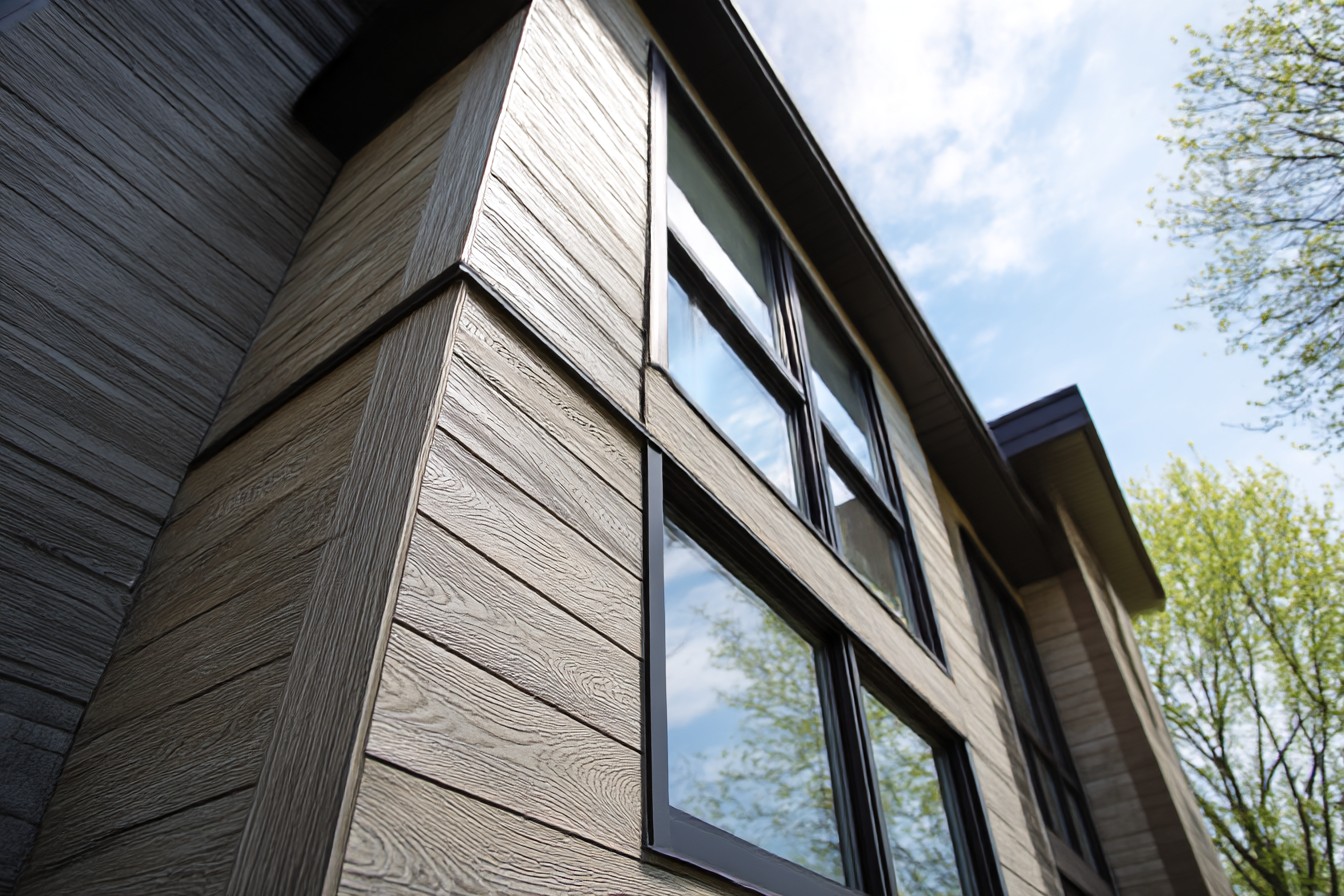
The good news is we’ve come a long way from the days when your exterior cladding choices were basically vinyl, wood, or brick. Today’s market offers several alternatives that provide better durability, improved aesthetics, and often better long-term value despite higher upfront costs. Let’s break down the options that have consistently performed well across different regions and house styles.
Fiber cement siding is probably the alternative I recommend most frequently. Developed in the 1980s but really gaining traction in the early 2000s, fiber cement is a composite material made from cement, sand, and cellulose fibers. The most recognized brand is James Hardie (often just called “Hardie board” or “Hardie plank”), though there are other manufacturers like Allura and Nichiha.
When I renovated my sister Eliza’s Michigan ranch, fiber cement was a no-brainer. The house faces a small lake, so it gets hammered by wind, rain, snow, and summer humidity—conditions that would destroy vinyl and require constant maintenance on wood. Four years later, the fiber cement looks identical to the day it was installed, despite Michigan’s climate throwing its worst at it.
The pros of fiber cement are substantial: it’s highly resistant to rot, fire, and insects; maintains its color significantly longer than vinyl; and can withstand impacts that would puncture or crack vinyl siding. It also comes in a variety of styles that convincingly mimic traditional wood siding, from lap boards to shingles. On historical renovations, I’ve used fiber cement shaped like traditional clapboard that even preservation-minded neighbors couldn’t distinguish from the original wood once painted.
The downsides? It’s definitely more expensive than vinyl—typically 2-3 times the cost for materials alone. Installation is more labor-intensive, requiring special cutting tools because of the silica dust (seriously, wear proper respiratory protection if you DIY this). It’s also heavier than vinyl, sometimes requiring additional structural considerations. Despite these challenges, I’ve yet to have a client regret choosing fiber cement over vinyl, especially in regions with extreme weather swings or high humidity.
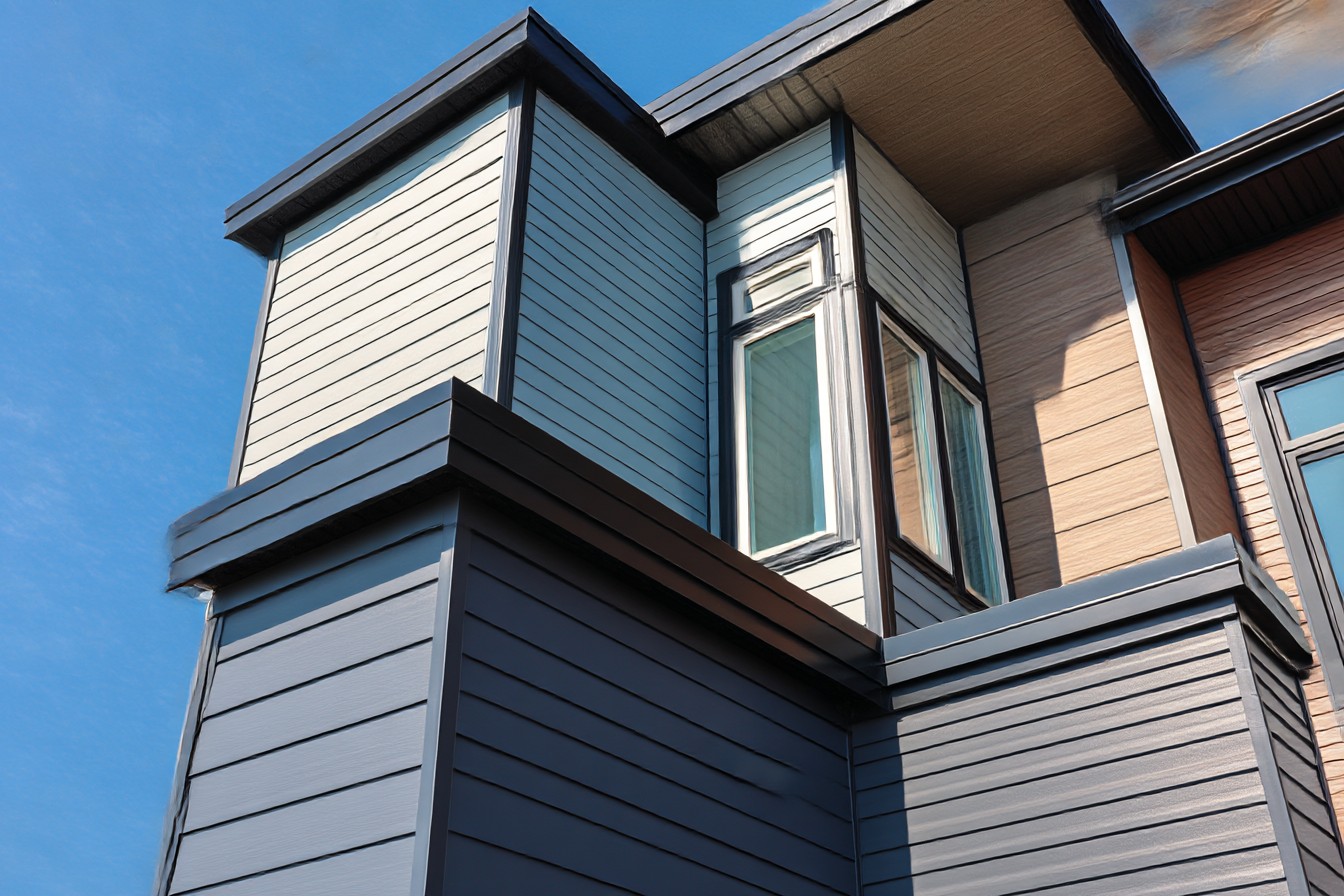
For my client Jeff’s mountain cabin in Colorado, we faced unique challenges—wild temperature fluctuations, intense UV exposure at altitude, heavy snow loads, and significant wildfire risk. Fiber cement was the obvious choice, particularly given the fire-resistant properties. We went with Hardie’s rustic shingle style in a deep green that complemented the pine forest surroundings. Six years and numerous blizzards later, it still looks fresh, while his neighbor’s vinyl has cracked from UV degradation and extreme cold.
Engineered wood siding has come a long way from the problematic composite sidings of the ’80s and ’90s (anyone remember Masonite failures?). Today’s products, like LP SmartSide, combine wood fibers with resins and zinc borate for pest and decay resistance. The result is a product that looks more authentically like wood than vinyl ever could, but with better durability and less maintenance than traditional wood siding.
I used engineered wood on my own garage renovation in Minneapolis, partly as a test case before recommending it more broadly to clients. After four brutal winters and the kind of summer humidity that makes you feel like you’re breathing through a wet towel, I’m impressed. It’s held paint beautifully, shows no signs of water damage despite being just 18 inches from our record-breaking snowdrifts, and has maintained its dimensional stability without warping.
The major advantages of engineered wood include a more authentic wood appearance (particularly at the joints and corners), better impact resistance than fiber cement (it won’t crack or break when hit), and easier installation with standard woodworking tools. It’s typically priced between vinyl and fiber cement, making it a solid middle-ground option.
The drawbacks? It’s not as fire-resistant as fiber cement, and while dramatically improved from earlier generations, it still doesn’t have the multi-decade track record of cement-based products. I generally don’t recommend it for very wet coastal areas or tropical zones with sustained high humidity and termite pressure, but for most mainland climate zones, it’s performing impressively well.
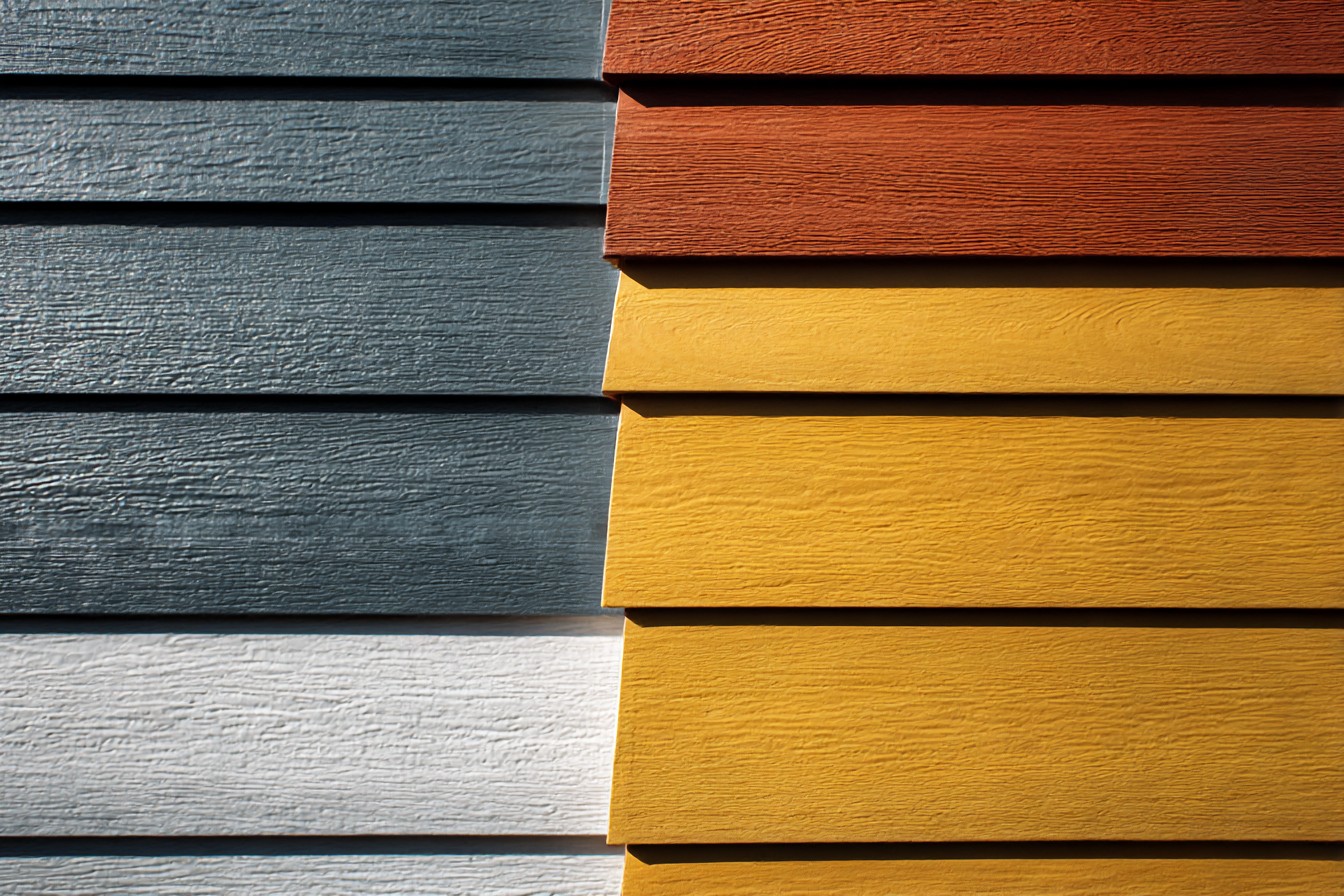
My client Sarah in Austin replaced her melting vinyl (Texas sun is no joke) with engineered wood in a board-and-batten style that transformed her basic 1990s tract home into something with genuine architectural presence. The material has held up beautifully to the heat, occasional hailstorms, and biblical rain events that characterize central Texas weather.
For modern homes or contemporary renovations, architectural panels offer exciting alternatives to traditional siding. Products like Nichiha’s fiber cement panels, metal composite materials (MCM), or phenolic resin panels create clean, sleek facades that vinyl simply can’t mimic. These panel systems typically use a rainscreen installation method, creating an air gap between the building envelope and the exterior cladding that improves energy efficiency and prevents moisture problems.
When Andrea and I consulted on a dramatic renovation of a dated 1970s split-level in Chicago’s North Shore, we recommended architectural panels for the upper portion combined with traditional brick on the lower level. The contrast between materials gave the formerly forgettable house a distinctive contemporary identity while actually improving its weather resistance.
The primary advantages of architectural panels include contemporary aesthetics, exceptional durability, and the ability to incorporate extremely large format elements that minimize seams. Many options are available in pre-finished colors with 20+ year warranties, eliminating painting maintenance entirely. For fire-prone areas like parts of California, metal composite panels offer outstanding fire resistance.
The disadvantages? These are typically the most expensive cladding options discussed here, often requiring specialized installation teams familiar with rainscreen systems. They’re also not appropriate for every architectural style—putting ultra-modern panels on a Victorian would be architectural malpractice in my book.
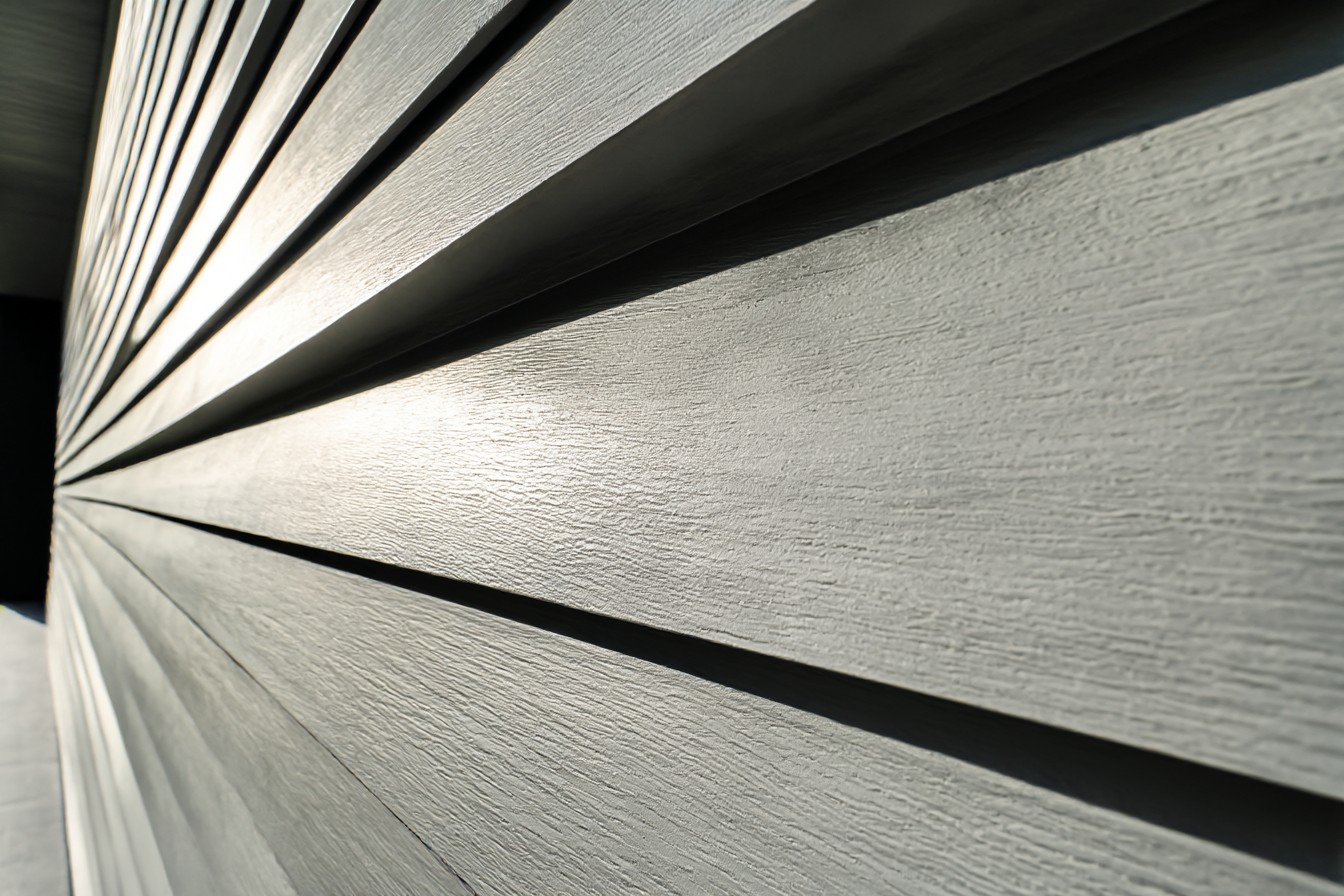
For more traditional homes where authentic character is paramount, there’s been a resurgence in traditional materials like cedar shingles and shakes, often with modern manufacturing improvements. Companies like Maibec and Cedar Valley produce pre-stained cedar shingles with factory-applied finishes that significantly outperform field-applied stains. While still requiring more maintenance than composite options, these factory finishes often carry 15-year warranties—a far cry from the 3-5 year repaint cycles of traditional cedar.
When I worked on restoring a classic Cape Cod style home in Massachusetts, the owners were adamant about maintaining authentic cedar shingles. We compromised by using factory-finished shingles with a semi-transparent stain that allowed the natural grain to show through while providing significantly better UV and moisture protection than traditional field-applied products. Four years into what would normally be a repaint cycle, the siding looks weathered in the best possible way—that silvery patina that makes New England coastal homes so distinctive—without any signs of failure.
The regional performance of all these materials varies significantly with climate conditions. In the wet Pacific Northwest, fiber cement has proven exceptionally resistant to the constant moisture, while engineered wood requires more careful installation and maintenance. In the Southwest, architectural panels stand up to the intense sun without fading or degrading, while engineered wood may require more frequent repainting to maintain appearance. In Hurricane Alley along the Gulf Coast, proper installation of any siding is actually more important than the specific material, as wind-driven rain will find any installation defect.
Speaking of installation—this is where many alternative siding projects succeed or fail, regardless of material choice. Vinyl is relatively forgiving of installation errors; these more durable alternatives generally are not. Improper flashing, inadequate clearances from grade or rooflines, and incorrect fastening can all lead to premature failures. Unless you have specific experience with the material you’re using, hiring experienced installers is worth every penny.
My neighbor tried installing his own fiber cement after watching me manage my garage project. The difference? I’d spent months researching proper techniques and had supervised professional installations on client homes. He ended up with wavy siding, visible seams, and flashing issues that led to water intrusion within two years. The material wasn’t the problem—the installation was.
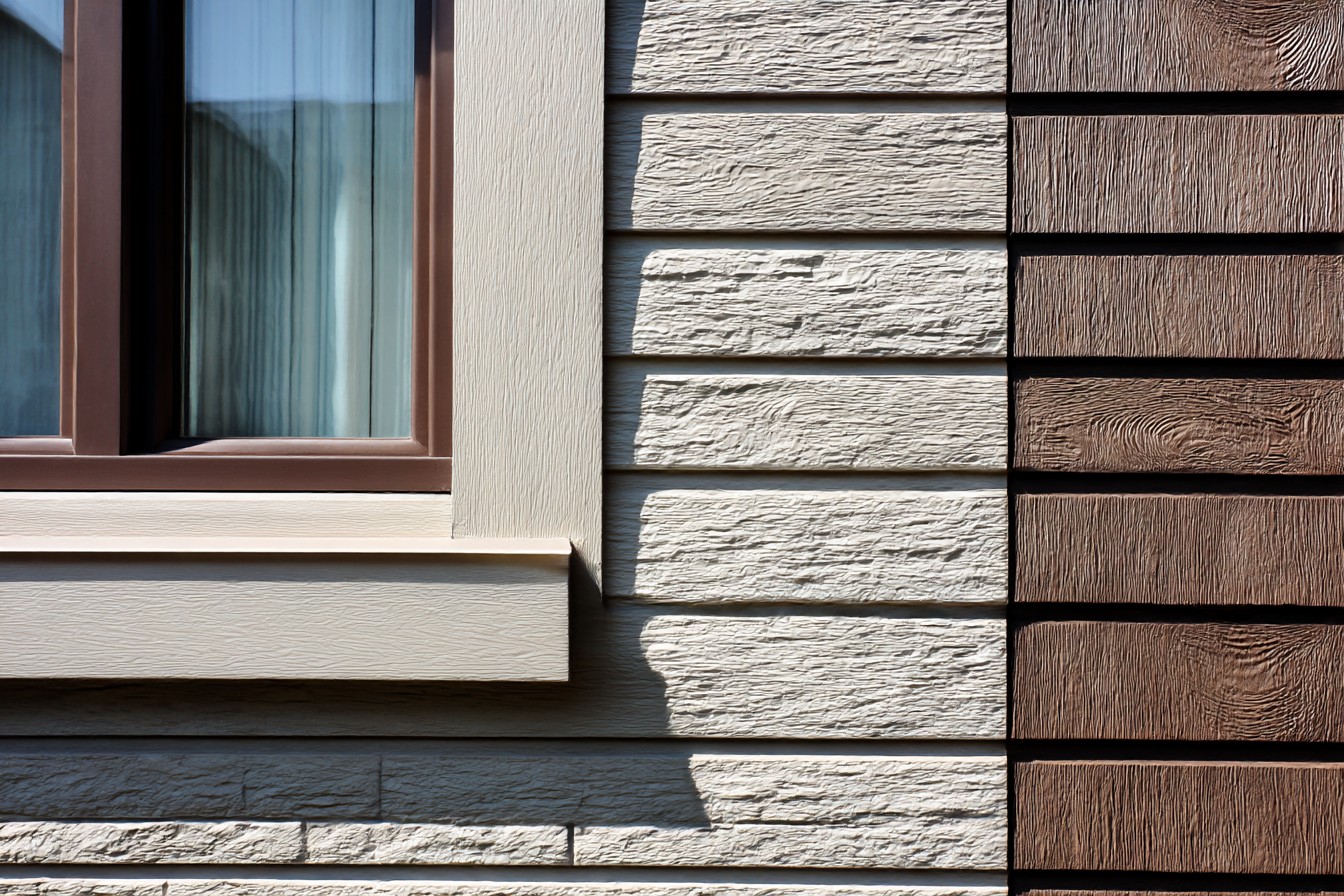
Cost is obviously a major factor in siding decisions. As a rough guideline, expect vinyl to run $5-10 per square foot installed, engineered wood $8-12, fiber cement $10-15, and architectural panels $15-30 or more, depending on the specific product and complexity. However, when you factor in durability, maintenance costs, and potential energy efficiency benefits of better systems, the lifetime cost equation shifts significantly.
When my clients in Wisconsin were debating between vinyl and fiber cement for their farmhouse renovation, I showed them a 30-year cost projection including maintenance, painting cycles, and projected energy savings from the better insulated installation system. Despite costing 40% more upfront, the fiber cement solution actually worked out cheaper at the 12-year mark and considerably more economical over the full timespan of their expected ownership.
As for that Detroit couple with the vinyl-covered Craftsman? They ultimately decided to restore the original cedar shingles on the front facade for authentic curb appeal, while using engineered wood that matched the profile for the less visible sides of the house. This compromise gave them the character they wanted where it mattered most, while providing lower maintenance on the larger wall sections. Five years later, they still send me Christmas cards featuring their beautiful home—now a standout in their historic neighborhood rather than another vinyl-clad anonymity.
The ideal siding choice depends on your specific needs: architectural authenticity, climate challenges, budget constraints, and maintenance tolerance. But one thing’s for certain—we’re living in a golden age of exterior cladding options that are leaving vinyl in the dust in terms of appearance, performance, and longevity. For almost any home where character and durability matter, there’s now a better alternative to vinyl that will serve your house and your sanity for decades to come.